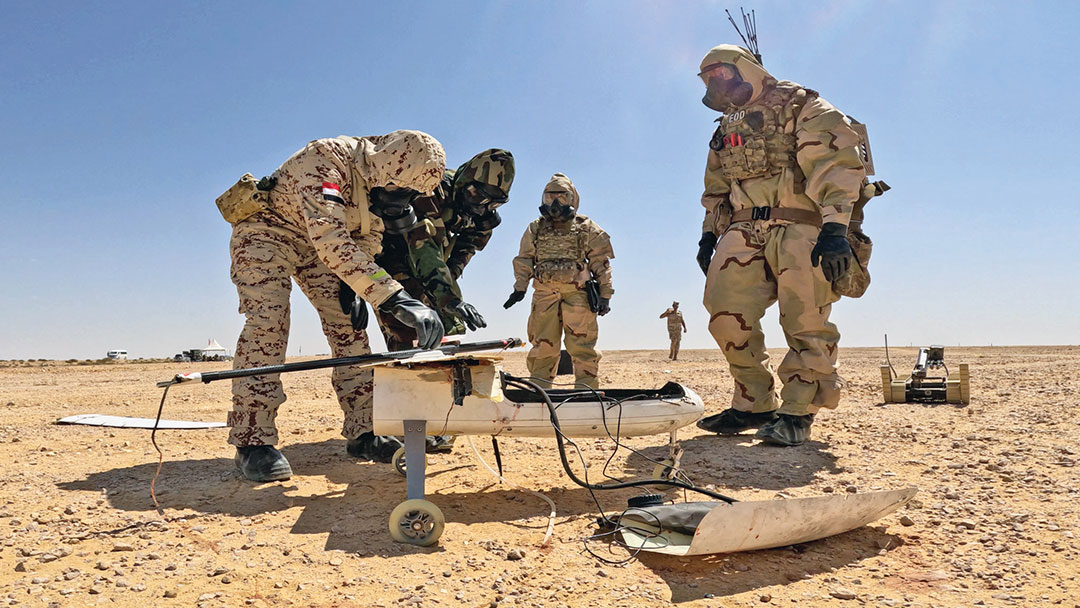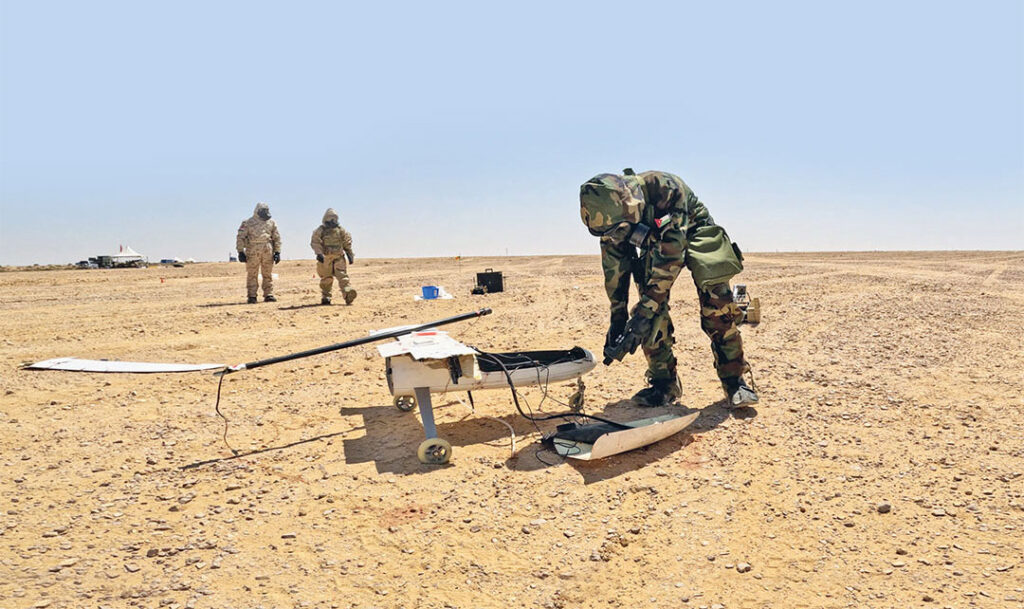UNIPATH STAFF | Photos by CAPT. LUKE JEAN/U.S. ARMY
The unmanned aerial vehicle circled overhead with an ominous hum that suggested potential disaster.
Egyptian troops opened fire with their rifles — forcing the UAV into a crash landing in the desert — but not before the drone sprayed an Egyptian infantry company and their five trucks with an unknown agent.
Investigators approached the smooth white wreckage of the drone with caution. As an Egyptian military truck marked off the crash site with yellow warning flags, a multinational reconnaissance team donned protective suits.
The first step involved dispatching a remote-controlled tracked vehicle equipped with a robotic arm and camera to scan the debris for explosives and cameras. Some UAVs — dubbed “kamikazes” — are booby-trapped to explode when troops approach.
Confident that the debris of the UAV was largely inert, the reconnaissance team approached on foot. They were looking for traces of chemical, biological, radiological or nuclear (CBRN) weapons. One Soldier carried a portable X-ray device to peer more deeply inside the wreckage. A Geiger counter scanned for signs of radiation.

The Egyptian infantry company doused by the drone complained of physical symptoms that include sneezing, irritability, skin welts and irregular breathing: all signs of chemical agents exposure.
A decontamination team swept into action. Dozens of multinational troops formed a staging area to remove the hazardous chemicals from the victims and their equipment. Participants from Egypt, Saudi Arabia, Jordan, the U.S. and India formed teams to handle different stages of the decontamination process. All wore protective suits and hoods.
The first line of troops rinsed off the contaminated equipment and Soldiers, who proceeded to a second station for a deep scrub with agents such as chlorine that can neutralize the effects of the chemical agents. After a thorough soak, the trucks and personnel received another rinse, followed by an examination to ensure there were no lingering ill effects.
The CBRN exercise was a critical part of Bright Star 23, overseen by U.S. Central Command’s Countering Weapons of Mass Destruction Division. Before the troops could take the field to counter the simulated drone attack, they absorbed classroom lessons for two days on countering chemical and nuclear agents.
Preparation also included a stretch in a mobile “mask confidence chamber” that reassured troops that their masks and suits wouldn’t leak and subject them to potential harm in the event of an actual attack.
In an era when an increasing number of battlefield threats come in the form of unmanned aerial systems, such counter-UAV and CBRN training will remain a critical part of Bright Star and other multinational exercises.

